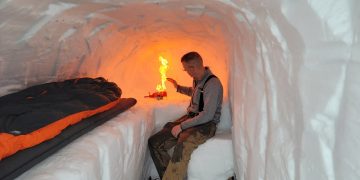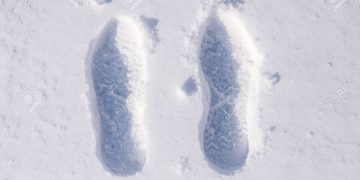When most people think about survival skills, firecraft is one of the first things that comes to mind. The ability to create and control fire is not just a cool party trick or a relic of ancient times—it’s one of the most vital skills a person can possess in the wild or in a survival situation. Whether you’re an outdoor enthusiast, an adventurer, or someone looking to increase your self-reliance, mastering firecraft should be one of your top priorities. In this article, we’ll explore why firecraft is so important, how to master it, and what makes it a crucial part of your skill set.
The Crucial Role of Fire in Survival
The importance of fire cannot be overstated. In a survival situation, fire is not just for warmth—it serves multiple critical functions:
- Warmth: Hypothermia is one of the leading causes of death in the wilderness. Fire is the primary means of staying warm in cold environments, especially if you don’t have access to proper clothing or shelter. Fire allows you to regulate your body temperature, preventing life-threatening conditions in cold environments.
- Cooking and Purification: Fire is essential for cooking food. While you can survive without cooking, eating raw food can be dangerous and less nutritious. Fire also allows you to purify water, making it safe to drink by killing harmful microorganisms and parasites.
- Signaling: Fire can serve as a beacon for rescuers. Whether you’re stranded in the wilderness or lost in an urban environment, a signal fire can alert others to your location.
- Protection from Wildlife: A fire provides a barrier against wild animals, particularly nocturnal predators. The light and heat from a fire will often keep animals at bay.
- Psychological Comfort: There’s something inherently comforting about fire. Its flickering light and crackling sound provide psychological reassurance in otherwise stressful, uncertain situations. This can help maintain your mental health in challenging conditions.
Given its broad array of uses, it’s easy to see why firecraft should be your first priority when preparing for a survival scenario. Without it, even the most prepared adventurer will find it difficult to thrive.
Firecraft: A Gateway Skill to Other Survival Techniques
Mastering firecraft isn’t just about the fire itself—it’s also a gateway to mastering other critical survival skills. Once you understand fire, many other survival skills begin to fall into place more easily.

1. Shelter Building
Understanding how fire behaves can help you build more effective shelters. For example, knowing how to position your shelter in relation to wind, how to avoid dangerous areas (such as places where a fire might start uncontrollably), and how to maximize the heat from your fire for comfort can all be enhanced by an intimate knowledge of fire.
2. Foraging and Hunting
A fire is essential for cooking and preserving food. Moreover, the process of hunting often requires fire to cook meat, prepare traps, or even signal animals. If you’re adept at making fire, you’ll likely be able to adapt your foraging and hunting skills accordingly. Fire allows you to preserve food for future use and increases your chances of survival by making wild food sources more accessible and edible.
3. Tool Making
Primitive tools, like knives and spear points, often require fire for shaping and sharpening. Fire also helps in the process of making cordage from plants, which is a necessary skill for creating traps, building shelters, and securing other tools. The ability to master fire also gives you the ability to master these essential primitive techniques.
Firecraft and Modern-Day Applications
While firecraft is an age-old survival skill, it’s just as valuable in modern-day scenarios. From outdoor adventures like hiking and camping to emergency preparedness, firecraft is just as relevant in today’s world.
- Wilderness Exploration
If you’re hiking or camping, firecraft becomes essential for warmth, cooking, and signaling. Even in relatively safe environments, a well-maintained fire can make the experience far more enjoyable and comfortable. Whether you’re cooking your catch over an open flame or using fire to dry out wet clothing, it’s a skill that pays dividends on every outdoor excursion. - Urban Survival
In a disaster situation—whether it’s an earthquake, power outage, or civil unrest—having the ability to make fire gives you a lifeline. If you lose access to electricity or water, fire can be used for cooking, heating, and purifying water, giving you the ability to survive until help arrives. - Preparedness for Emergencies
Even in urban or suburban areas, knowing how to make fire can help you stay prepared for emergencies. Firecraft is a valuable skill for anyone looking to increase their self-reliance. It’s not just for wilderness enthusiasts but for anyone who wants to be ready for any type of situation.
The Science of Fire: What You Need to Know
Before you start experimenting with firecraft, it’s essential to understand the basic science behind fire. In its simplest form, fire is the result of three key components:
- Heat: Enough heat must be produced to raise the temperature of the material to the point where it combusts.
- Fuel: Fire requires something to burn, whether it’s wood, dry grass, or other materials.
- Oxygen: Fire needs oxygen to sustain itself. Without oxygen, fire will smother.
This is commonly known as the “fire triangle.” Any good firemaker understands how to manipulate these elements to create a sustainable flame.
Basic Firemaking Techniques
Mastering firecraft involves learning a variety of firemaking techniques. While there are several methods to make fire, here are a few of the most common ones:

1. Fire by Friction
This is one of the most traditional fire-starting techniques. It involves rubbing two pieces of wood together to create friction and heat. When done correctly, this will produce an ember that can be transferred to tinder to ignite a flame. The two most common types of fire by friction methods are the bow drill and the hand drill.
2. Fire by Sparks
Using a flint and steel or ferrocerium rod to create sparks is a reliable fire-starting technique. The sparks produced can ignite charred material or dry tinder, which can then be used to build a larger fire. This technique requires practice to perfect but is one of the most versatile and dependable methods for starting a fire in damp conditions.
3. Fire by Sunlight
Using sunlight to start a fire is both a skill and a science. A magnifying glass or concave lens can focus sunlight onto tinder, creating enough heat to start a fire. While this method works best on sunny days, it is an effective way to start a fire without matches or a lighter.
4. Fire with Modern Tools
In addition to traditional fire-making methods, modern tools like lighters, waterproof matches, and fire starter kits make creating fire much easier. While these methods are more convenient, knowing how to make fire without relying on modern technology is an essential survival skill.
Mastering Firecraft: Tips and Best Practices
- Preparation is Key
Before trying to make a fire in the wild, make sure you have all the materials you need. This includes tinder (small, dry material like cotton balls or dry grass), kindling (small sticks or twigs), and fuel (larger logs and branches). Keep your materials dry and properly stored to ensure success. - Practice Makes Perfect
Like any survival skill, firecraft requires practice. Don’t wait until you’re in an emergency to try it out for the first time. Spend time learning and practicing fire-making techniques in safe conditions. Try different methods and materials to see what works best in various weather conditions. - Understand Your Environment
Different environments will have different challenges when it comes to making fire. In a damp forest, you’ll need to find dry materials, and your fire-starting method might differ. In a desert, you’ll need to watch out for fire regulations due to dry conditions. Understanding how fire interacts with your environment will make you a more effective firemaker. - Safety First
Always prioritize safety when dealing with fire. Never leave a fire unattended, and make sure it’s fully extinguished before leaving an area. Wildfires can spread quickly, and a small spark can quickly turn into a dangerous blaze.
Conclusion
Mastering firecraft is one of the most fundamental survival skills anyone can learn. It’s not just about being able to start a fire in the wilderness—it’s about understanding fire as a tool for survival, comfort, and protection. Whether you’re camping in the wild or preparing for an emergency, knowing how to control fire can make the difference between life and death. Fire is the most versatile tool available to the survivalist, and mastering it will not only increase your chances of survival but also build confidence in your ability to handle any situation life throws at you.
So, why should you master firecraft before anything else? Because fire is life. Everything else you learn in survival is secondary to the ability to make and control fire. It’s a skill that opens the door to countless other survival techniques. It’s also a skill that can save your life when things go wrong. With firecraft in your arsenal, you’re ready to face the elements, build shelter, and signal for help. And perhaps most importantly, you’ll be ready to live to fight another day.























